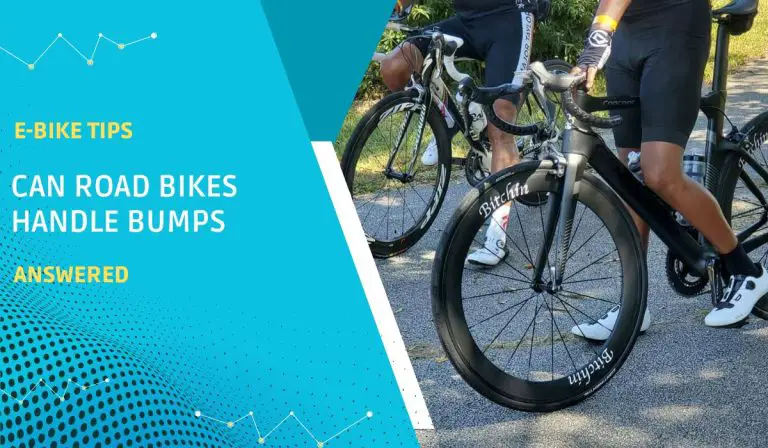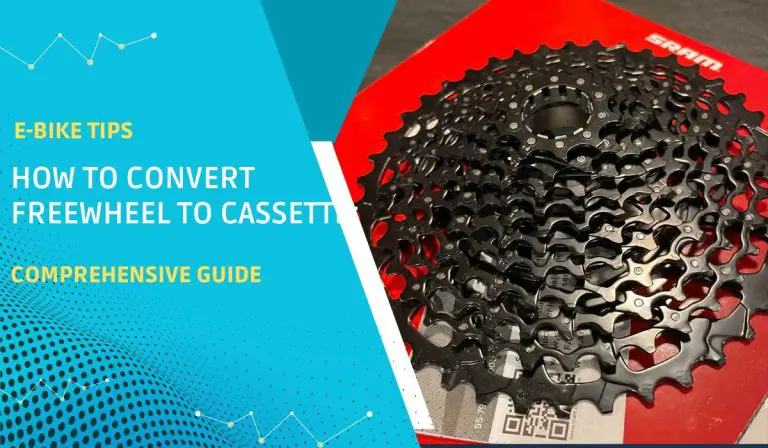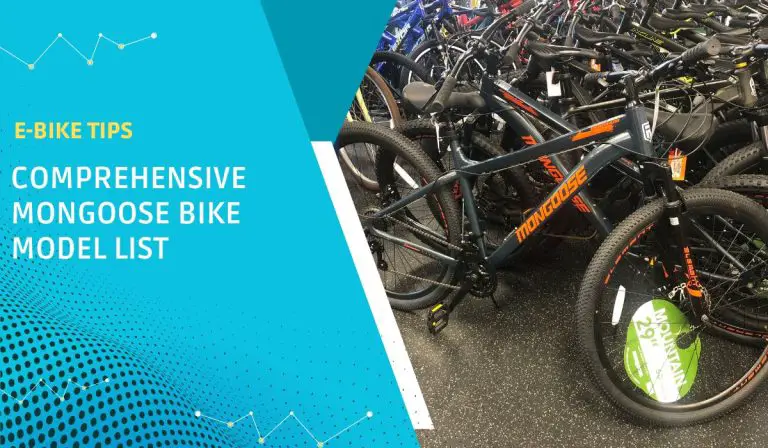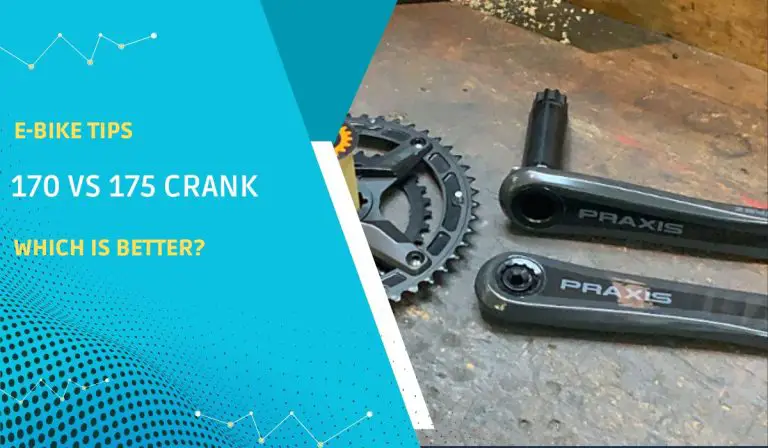Yes, road bikes can handle bumps, but they are not designed for them and could make your riding experience uncomfortable. Road bikes are designed for speed and efficiency on smooth roads. They have narrow tires, lightweight frames, and stiff components that are good on smooth surfaces, making them sensitive to vibrations and shocks from bumps.
A few weeks ago, I was riding my road bike on a country road that needed repair. The road was full of potholes and bumps, and it was very jarring to ride on. I had to slow down and carefully avoid the worst bumps. I also stood on the pedals to take some weight off the saddle. Even so, my body was still getting jostled around a lot. After a while, I started to get tired and sore, and I was glad when I finally reached a smoother section of road.
I learned a few things from that experience, which I will share in this article. I will focus on the features of a conventional road bike, the challenges you will face riding it on bumpy roads, and what you need to do to handle bumpy paths better.
Skip To Section Here
Key Features of Road Bikes
Road bikes are bicycles designed for speed and efficiency and, like their name suggests, to be ridden on paved roads. They are designed to be as lightweight as possible. This is because weight is a major factor in drag, so a lighter bike will be faster. The frame is usually made of carbon fiber, the lightest and strongest material available.
Road bikes have narrow tires, typically 23–28 mm wide, and therefore have less rolling resistance than wider tires—so they are faster. They also provide less grip, so road bikes are not well-suited for riding off-road.
These bikes have a geometry that is designed for speed. This puts you in a more aerodynamic position, with your back hunched over and your arms extended. This position reduces drag and allows you to go faster.
In addition to these key features, road bikes typically have drop handlebars, multiple gears, and stiff components.
The Challenge of Riding Your Road Bike on Bumpy Roads
Road bikes are designed for smooth roads, so riding them on uneven surfaces can be uncomfortable. The narrow tires and stiff frames can transmit bumps and vibrations directly to you, which can cause pain in your hands, wrists, back, and neck.
These tires also make road bikes more difficult to control on uneven surfaces. The bumps and vibrations can make keeping the bike upright and steering difficult. This can be especially dangerous in traffic or riding at high speeds.
The narrow tires and stiff frames of road bikes can also make them more susceptible to damage when riding on uneven surfaces. The bumps and vibrations can cause the tires to pinch flat or the frame to bend or break.
Let me take you back to my experience with my road bike. Even after feeling so sore from the ride and reducing my speed to accommodate the bumps on the road, I learned a few things. I learned that it’s important to be aware of the road conditions before you start riding, and while riding, it’s important to take it easy and be careful on bumpy roads. I also learned that it’s a good idea to have a bike that is designed for comfort on rough surfaces or to customize your bike to fit it in case you ply bumpy roads more often.
If you are going to be riding on many uneven surfaces, it might be a good idea to get a bike designed for them. There are a variety of endurance bikes and gravel bikes that are designed to be more comfortable and stable on rough surfaces.
Technological Advancements
Recently, some brands have taken up innovative ways to address the comfort issues of road bikes without compromising their performance. Here are some of the innovations that were picked up:
- Wider tires: Wider tires have more air volume, which helps absorb shocks and vibrations. This makes your ride more comfortable, especially on bumpy roads. Some popular road bikes with wider tires include the following:
- Specialized Roubaix
- Trek Domane
- Cannondale Synapse.
- Suspension seat posts: Suspension seat posts have a small spring or damper that helps absorb shocks and vibrations. This makes you more relaxed, especially on rough roads. Some popular road bikes with suspension seat posts include the following:
- Cannondale Synapse
- Giant Defy.
- Aerodynamic handlebars: Aerodynamic handlebars are designed to reduce drag, which can make your bike faster but quite uncomfortable on bumpy roads. Some manufacturers are now making aerodynamic handlebars with vibration-absorbing features.
- Vibration-damping materials: Some manufacturers are using vibration-damping materials in the frame, fork, and other components of the bike. These materials help absorb shocks and vibrations.
These are just a few of the recent innovations and technologies that are being used to address the comfort issue with road bikes. As technology continues to develop, we can expect to see even more comfortable and performance-oriented road bikes in the future.
Here are some bikes from other brands that are known to be comfortable road bikes:
- BMC Roadmachine
- Cervélo RS
- Pinarello Dogma F
Bike brands are constantly innovating and developing new technologies to improve the comfort and performance of their road bikes. If you are looking for a comfortable and performance-oriented road bike, these are some you should consider.
Tips for a Smoother Ride
Having ridden on bumpy and potholed paths, I have gathered some tips you can use to handle bumps better when you’re riding your road bike. They are:
- Balance tire pressure: Wider tires with lower tire pressure can help absorb bumps and vibrations. This is because wider tires have more air volume, which can better absorb shocks. Lower tire pressure also helps to absorb shocks, but it can also make the bike less stable. So, it is important to find a balance between tire width and tire pressure that provides the best comfort and stability for your riding style.
- Position your body properly: When riding on bumpy roads, it is important to shift your weight back in the saddle. This will help you take some of the weight off your hands and wrists, which can help reduce fatigue and discomfort. You can also try standing up on the pedals when you hit a bump, which will help you absorb the shock through your legs.
- Handling techniques: When riding on bumpy roads, it is important to be smooth and avoid sudden movements. This will help to keep the bike under control and prevent you from getting bounced around. You can also try to anticipate bumps and avoid them if possible.
- Slow down. The faster you are going, the harder the impact will be. If you can, slow down before you hit a bump or uneven surface.
- Flex your knees and elbows. This will help absorb the shock through your body.
- Look ahead and avoid the worst bumps. If you can see a bump coming, you can steer around it or slow down to avoid it.
- Get a suspension seatpost or suspension stem. These components can help absorb shocks from the road.
By following these tips, you can improve your ability to handle bumps on a road bike and make your rides more comfortable and enjoyable.
Conclusion
There are a few things that you can do to improve the comfort of your road bike, such as using wider tires, lowering tire pressure, and shifting your weight back. The best way to find the right balance between speed and comfort is to experiment. Try different tires, tire pressure, and body positions until you find what works for you.
With a little trial and error, you will be able to enjoy the thrill of road cycling, even on bumpy roads. So get out there and start riding! The road is calling.
Thank you for reading.
FAQs
How to handle bumps on a road bike
You can handle bumps by using wider tires with lower tire pressure, shifting your weight back in the saddle, and standing up on the pedals when you hit a bump. You can also be smooth and avoid sudden movements. Always look ahead and anticipate bumps.
How to choose the right tires for a road bike
To choose the right tires for a road bike, you have to consider the width, pressure, and tread pattern of the tire.
How to improve your body position on a road bike
To improve your body position on a road bike, you need to adjust the saddle height and handlebar height so that your back is straight and your shoulders are relaxed. Keep your arms bent at a comfortable angle and your wrists straight, and engage your core to help you maintain a good body position.





